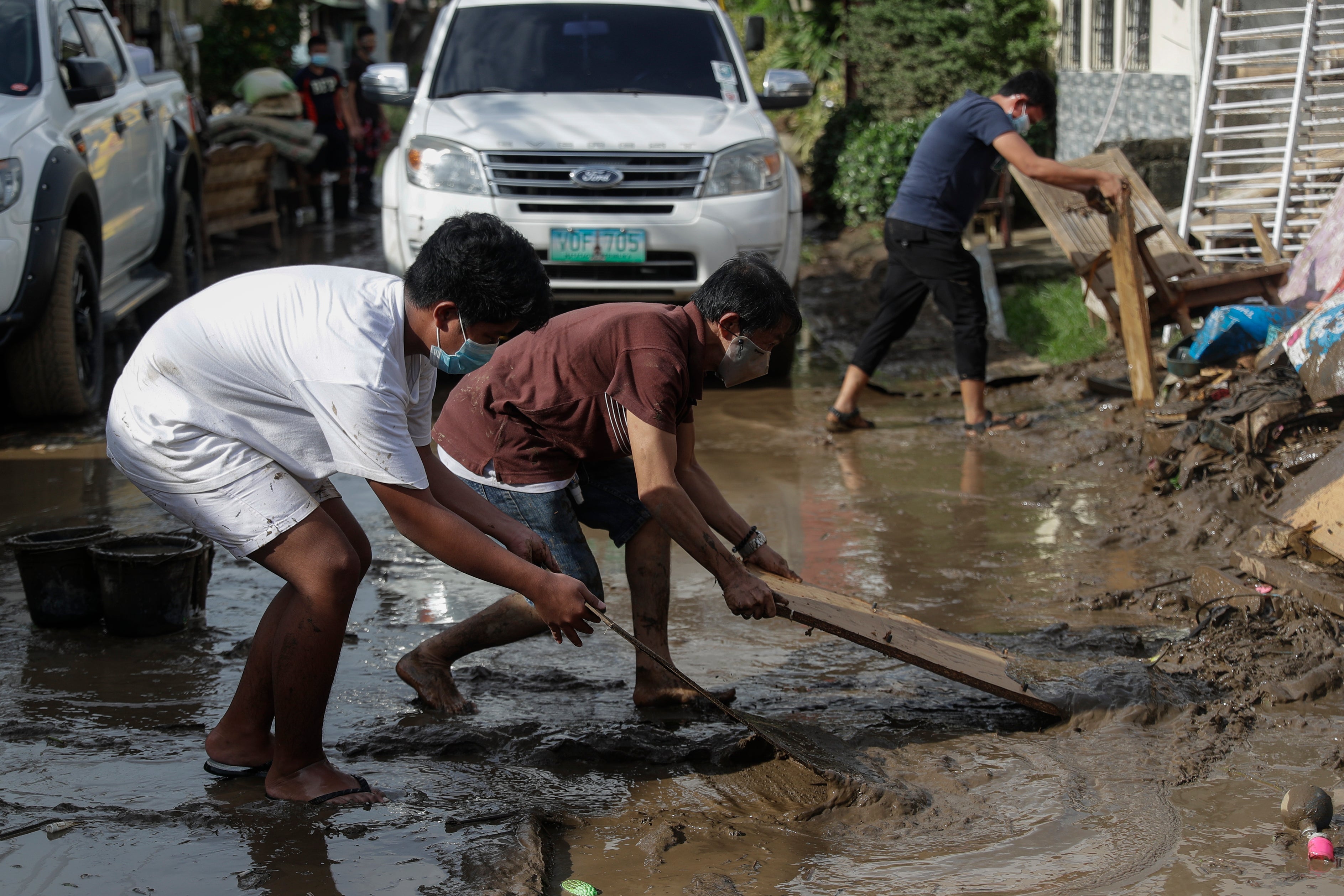Typhoon Goni: Fears for Philippines town devastated by 'most powerful 2020 storm' as death toll rises
Authorities assessing scale of damage after re-establishing connection with island province, which got cut off completely by the storm

Your support helps us to tell the story
From reproductive rights to climate change to Big Tech, The Independent is on the ground when the story is developing. Whether it's investigating the financials of Elon Musk's pro-Trump PAC or producing our latest documentary, 'The A Word', which shines a light on the American women fighting for reproductive rights, we know how important it is to parse out the facts from the messaging.
At such a critical moment in US history, we need reporters on the ground. Your donation allows us to keep sending journalists to speak to both sides of the story.
The Independent is trusted by Americans across the entire political spectrum. And unlike many other quality news outlets, we choose not to lock Americans out of our reporting and analysis with paywalls. We believe quality journalism should be available to everyone, paid for by those who can afford it.
Your support makes all the difference.Philippines officials say super typhoon Goni damaged as much as 90 per cent of the first city it struck as it made landfall on Sunday, as the government assesses the scale of the devastation from the worst storm of the year so far in Asia.
At least 16 people were killed and thousands of homes washed away during the storm, officials said, with the worst damage seen in the city of Virac in Catanduanes province, home to some 70,000 people.
Dick Gordon, chair of the Philippines Red Cross, said in a statement: “This typhoon has smashed into people's lives and livelihoods on top of the relentless physical, the emotional and economic toll of Covid-19.”
More than 13,000 homes, some engulfed by up to five metres (16.4 ft) storm surge, were damaged as Goni made landfall with wind gusts of up to 310 kph (190 mph), provincial governor Joseph Cua told a news conference.
"While there's no more typhoon, we have no air and sea transportation," Mr Cua said, adding that he hoped the country's energy department could help restore power.
Catanduanes and Albay, the two provinces that took the brunt of the storm, accounted for all 16 deaths. The authorities said they managed to re-establish contact with Catanduanes on Monday after communications were completely severed during the typhoon.
Manila’s international airport was shut down for 24 hours by the storm, though it had weakened considerably by the time it reached the capital.
President Rodrigo Duterte made an aerial inspection of the damage from Goni on Monday. Flying from his hometown Davao, he landed in Guinobatan town near Mayon, the Philippines' most active volcano.
Mr Duterte ordered an investigation into quarrying operations that residents complained had led to the burial of hundreds of homes in volcanic rock and mudflows, presidential aide and senator Christopher Go told reporters.
The authorities say forcible evacuation of more than 345,000 people averted more deaths than the 16 recorded up to now. Typhoon Goni is the 18th to hit the Philippines this year and one of the strongest typhoons since Haiyan killed more than 6,300 people in 2013.
Presidential spokesperson Hermino Lopez Roque said: "The goal should be zero casualties, but since people were forcibly evacuated our casualties were reduced."
Goni hit 2.1 million residents of Luzon, which accounts for more than two-thirds of the economy, leaving more than 50,000 homes without power by Monday.
Strong winds and torrential rain have damaged crops worth 1.1 billion pesos ($23 million), mainly rice and corn, Agriculture Secretary William Dar said.
Before Goni hit, the Philippines had been grappling with the impact of Typhoon Molave, which killed 22 people, most of whom drowned, in provinces south of Manila.
Another storm, Atsani, is gaining strength in the Pacific Ocean as it approaches the Philippines, which usually sees about 20 tropical storms every year.
Vietnam said Goni is forecast to hit its central coast on Wednesday night, dumping more heavy rain in an area where floods and landslides in the past month have already killed about 160 people, with dozens missing.
Every year the Philippines gets hit by an average of 20 typhoons, many of which turn out to be deadly and displace a large number of people. It is also located on the so-called Pacific Ring of Fire, where earthquakes and volcanic eruptions are common, making it one of the world's most disaster-prone countries. However, this year Covid-19 made evacuation efforts more difficult, the authorities say.
Additional reporting by agencies


Join our commenting forum
Join thought-provoking conversations, follow other Independent readers and see their replies
Comments